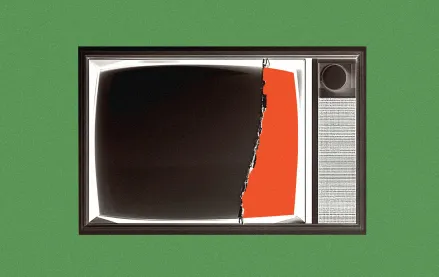
For LG, the future of advertising isn’t flashy ad tech or buzzworthy partnerships — it hinges on something far more mundane. The TV menu. The South Korean electronics giant has quietly bet its ads business on turning its smart TVs into the starting point for viewers’ streaming habits.
If LG Ad Solutions can make its home screen the default gateway to Netflix, Hulu and YouTube — not just a pass-through but the pace where browsing begins — it can claim a greater slice of the ad dollars flowing through connected television.
“Even though we don’t report the numbers, this year will be one of record revenues for the advertising business,” said Ed Wale, vp of international for LG Ad Solutions. “We’re going to continue building on the hardware footprint that LG has, which is around 200 million TVs globally.”
That scale matters. But the real lever for its ad dollars is the software. LG’s operating system (WebOS), embedded in its TVs for more than a decade, has become the backbone of its media ambitions. It’s what people see the moment they power on the TV and decide what to watch, stream or play. To make the most of that moment, LG Ads Solutions’ execs are focused on two things: monetizing every inch of attention its interface captures, and expanding that interface beyond the living room. WebOS can (and is being put in) more than just TVs. It’s in car monitors hotel screens and more.
“What’s actively happening now is the expansion of the WebOS into new environments, particularly non-enabled monitors will now have a Web OS operating system,” said Wale.
The wider the footprint gets, the more opportunities LG Ads Solutions has to turn LG screens into ad-supported media surfaces.
“Traditional TV has always put a premium on the first ad in break and I’d like to think the home screen is a new version of that,” said Wale.
But for that vision to fully take hold, viewers need to linger longer on the home screen itself, browsing, exploring, deciding instead of diving straight into apps. In other words, the app play works best when discovery starts, and perhaps even stays with LG.
“The reality of viewing is that it’s spread across all different types of environment,” said Wale. “As the owner of the glass we’re in a position where we can understand those behaviors and then continue to surface recommendations that are more dynamic and spanning across multiple environments.”
What that means in practice is a recommendation engine that’s less siloed, more holistic, Because LG owns the operating system, it has visibility into everything viewed on its device, across apps, AVOD, FAST challenge and even premium platforms like Disney+ and Netflix. That cross-platform insight gives the LG Ads Solutions a rare edge: not just a window into what people are watching, but the ability to steer what they watch next.
“The time spent on the home screen is not eating into the viewership of content from third-parties and subsequently having a negative impact on those businesses,” said Wale. “If anything it’s leading to more viewing happening generally because of the better recommendations we\re able to deliver.”
These efforts are happening against the backdrop of transition for LG Ads Solutions. Last month, a Delaware court reinstated the co-founders of Alphonso (the other name of LG Ads Solutions) to the company;s board, ending a three-year legal battle over control. The ruling didn’t just restore their governance rights, it also reactivated IPG provisions in the original acquisition agreement, potentially putting LG Ads Solutions on a path toward going public.
Until then, all eyes will be on LG Ad Solutions’ quiet bet on the TV menu unravels this year. Sound as the rationale is, it’s a precarious time for companies selling ads in an economic climate where ad dollars are being re-evaluated.
More in Marketing

Pitch deck: How Amazon is recasting Twitch as a core part of its CTV pitch
Amazon is positioning Twitch as a defining asset in its CTV ambitions.

Netflix transforms former mall department stores into experiential venues
The location in Dallas opens this week, and one at the King of Prussia mall near Philadelphia opened last month.

Future of Marketing Briefing: AI has created a new talent paradox in programmatic agencies
The job isn’t execution anymore. AI handles that. The job is judgement.








